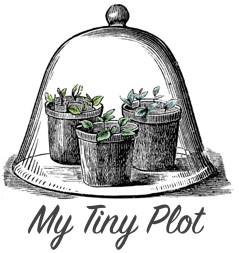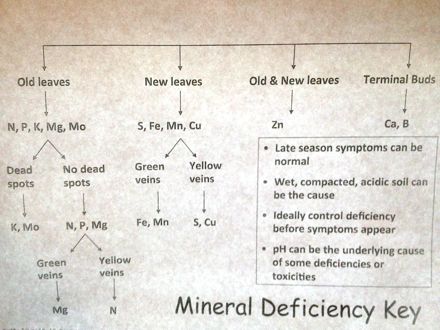Talking About Plant Nutrients
This week at my Master Gardener course we learned about soil nutrients and how they affect the way our plants grow. Nutrients are pretty important to all plant growth, especially vegetables since they are generally annuals. Any plant that lives and dies in one year is going to require a lot of nutrients.
There are 13 nutrients that are essential to plant growth. None of them are optional. All of them are required for plants to grow healthily, they are just required in different amounts.
Nitrogen (N) is the one that most plants need in abundance. If you think about it, most vegetables will need this in spades since they tend to be leafy, fast growing plants. Phosphorus (P) is another nutrient that plants need a lot of, and so is Potassium (K). These are called the ‘Primary Nutrients’. If you have ever bought a box of general purpose fertiliser for your vegetable garden that said NPK on the side, then now you can see why. They are the three biggies when it comes to growing healthy vegetables.
The nutrient table goes on like this:
Primary Nutrients
Nitrogen (N)
Phosphorus (P)
Potassium (K)
Secondary Nutrients
Sulfur (S)
Calcium (Ca)
Magnesium (Mg)
Micronutrients
Zinc (Zn)
Iron (Fe)
Copper (Cu)
Manganese (Mn)
Boron (B)
Molybdenum (Mo)
Chlorine (Cl)
I think I must have been off sick on the day that my chemistry teacher covered Molybdenum because I’d never heard of it before!
Remember, none of these are optional. They are all required for healthy plant growth. So how do you know if your soil is deficient in any of these and how can you correct it?
The easiest way to get to know your soil is to do a nutrient soil test. Not the kind of test that you buy from the nursery that looks like a test tube but a test done by a laboratory. There are soil testing services (do a Google search) that will test your soil sample and tell you the levels of nutrients in your soil. If your soil is deficient in any of the nutrients above they will tell you and also recommend the amount and type of fertiliser to you need to add to correct it.
I’ve never had my soil tested but I plan to do it in the next few weeks. Autumn would probably have been the best time to do it so that I could add any corrections then but we were in the middle of a huge re-landscape then and so it wasn’t ideal.
Your soil is most likely to be deficient in the primary nutrients since plants use them the most. Calcium and Magnesium deficiency is most likely in acid soils. Zinc deficiency is usually associated with high pH soils.
You can also tell if your soil is deficient by looking for characteristic symptoms in the leaves of your plants. Here is a handy chart that helps diagnose nutrient deficiencies just by looking at the leaves of stressed plants.
If you are adding lots of organic matter to your soil, taking care to preserve soil structure and not planting too intensively then your soil should be balanced. Keep an eye on the pH of your soil too and make amendments where necessary. There is a reason why a pH of 6.5 is recommended for vegetable growing and that’s because most soil nutrients are available at that pH. Once your pH starts to move away from 6.5 certain nutrients become unavailable.
I hope this is interesting. I found the workshop enlightening. Soil nutrients is a subject that I’ve largely avoided over the past years because I thought it was complicated and, in truth, a bit boring. But I think now I can trace some of my major failures back to soil issues. So in the future I’ll be keeping tabs on the state of my soil.
 My Tiny Plot
My Tiny Plot





Like you, I think I was washing my hair the day molybdenum was mentioned at school! But seeing as we’re getting all sciency….
Clay soils hold on to nutrients better because the soil molecules have a positive electrical charge (!?!). This makes the nutrients stick – like a balloon that you’ve rubbed on your jumper.
I realise this doesn’t make much difference because you can;t change your soil type – but it may be a crumb of comfort when you’re trying to whip a heavy clay soil into shape to start a veg plot.
The answer lies in the soil……
I always teach my adult students basic soil science so they understand how important it is to get the health and nutrition of plants right from the ground up.really interesting post, will send a few if then to read it!
Another interesting post. I’m learning a lot. Thanks so much for sharing your knowledge.
I have to admit, I’m a little bit of a soil science lover but know practically nothing about it. Your explanations are perfect for a interested dullard like myself. Thanks.
Great Post! My mom is a Master Gardener and I’d love to become one someday when I have the time and resources to devote to it. I’m happy to follow along with your lessons!
PS. In your third paragraph, I think you mean “Potassium (K)”
Well, thank you for this interesting reading :)
Katherine – corrected. Thanks!
I’ve learned what NPK stands for, honestly I thought it was a Japanese brand!
I’m interested in soil science in a nerdy sort of way! The mineral deficiency key is really useful, I will be referring to it. Thanks for passing on what you’ve learned!